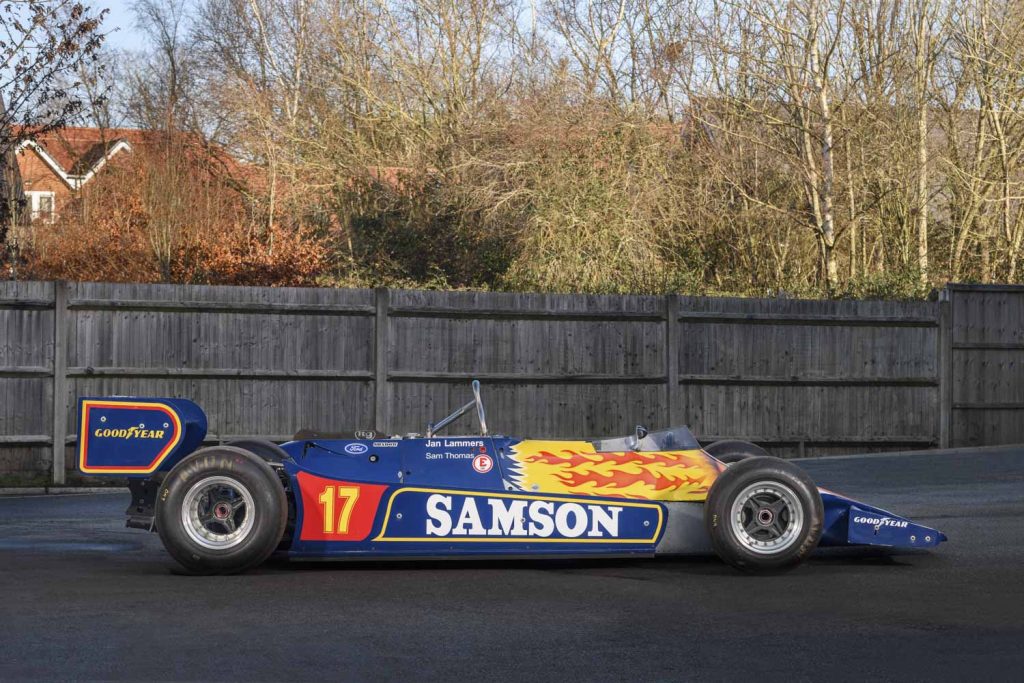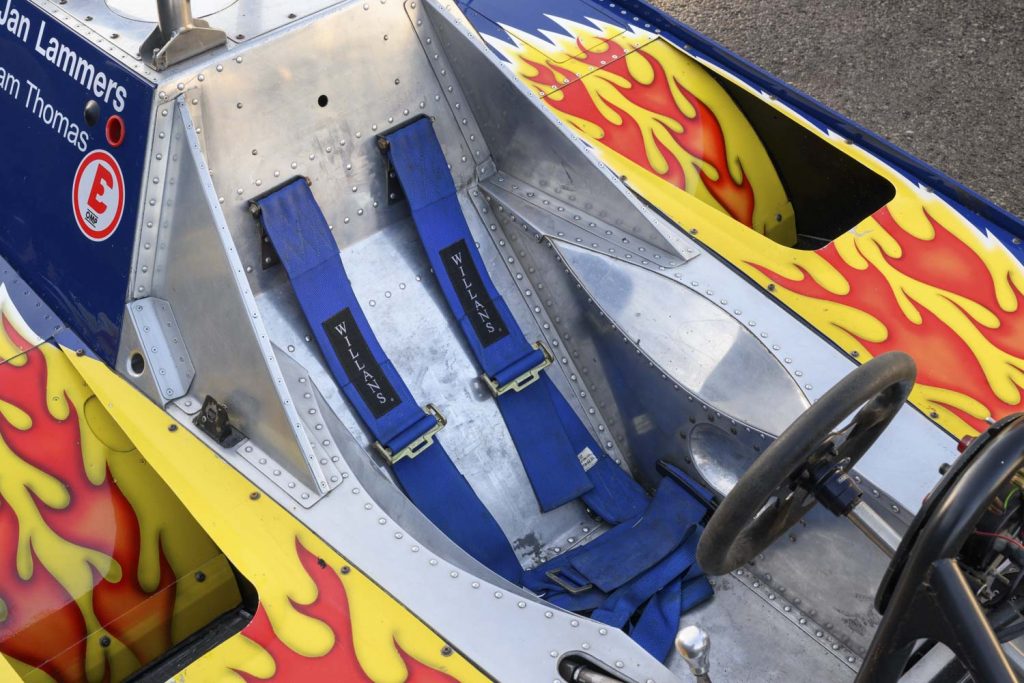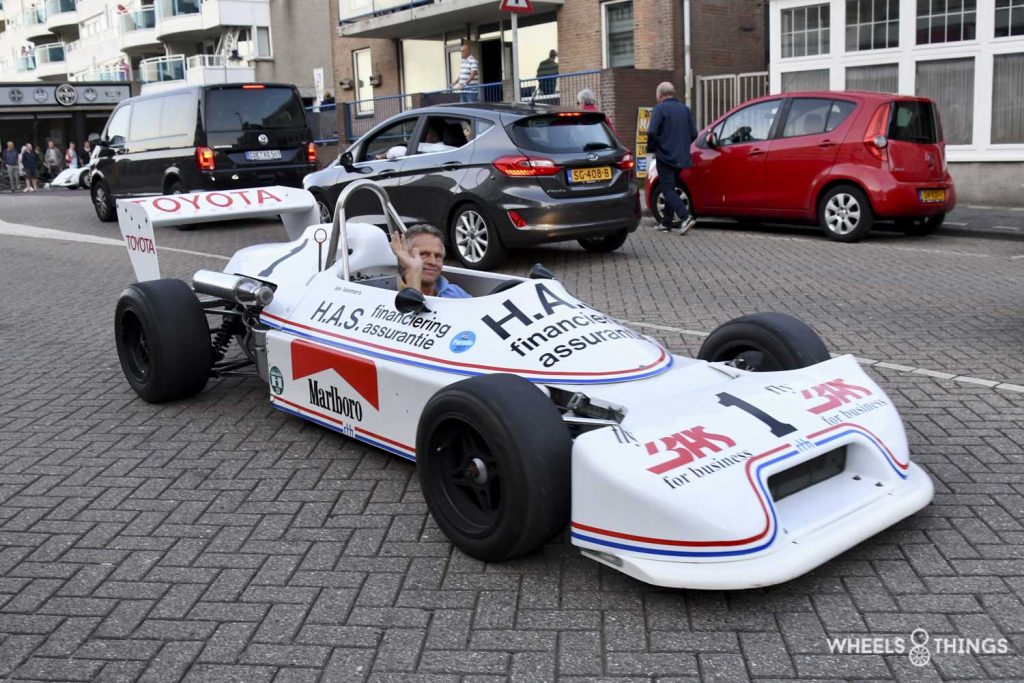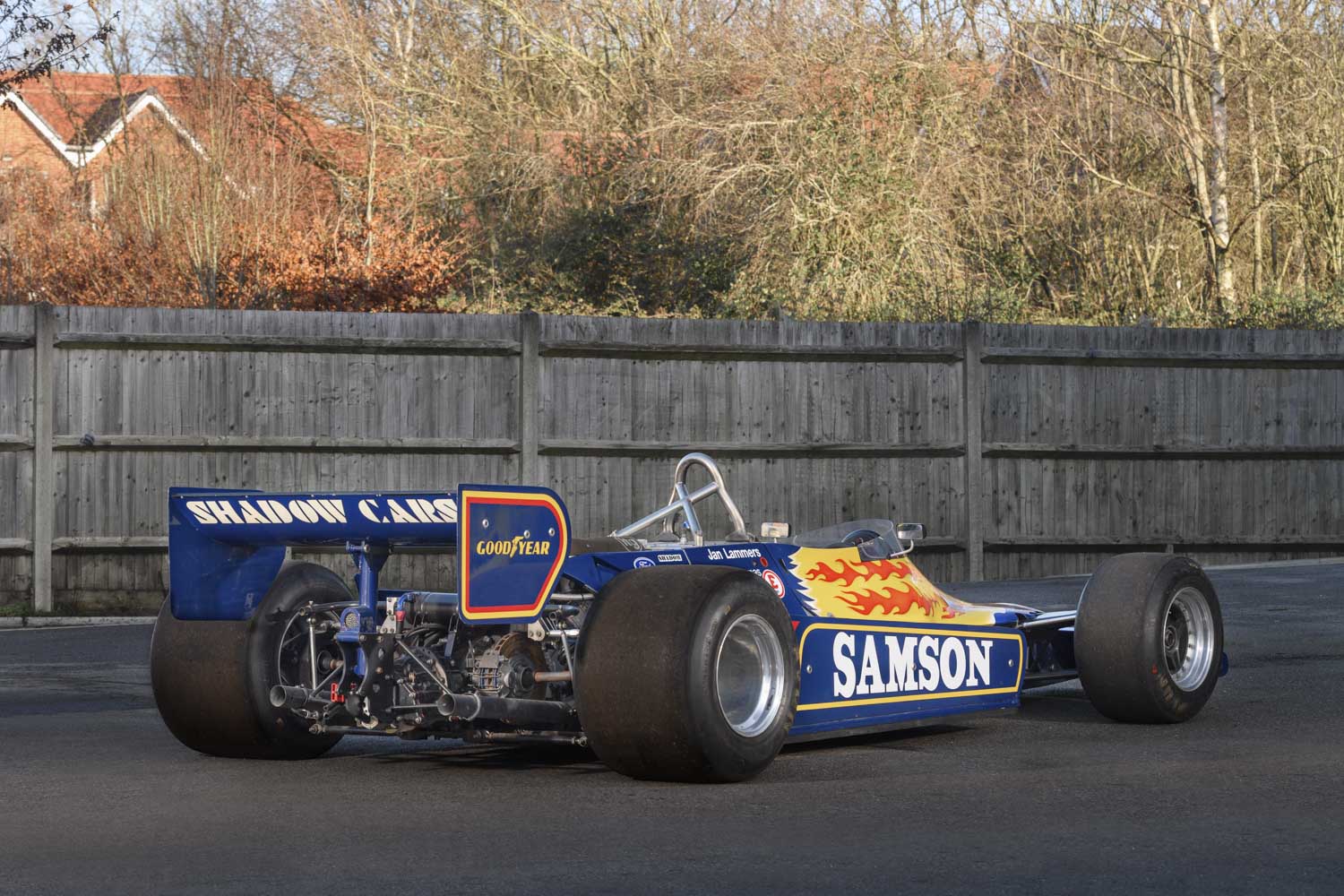
Historic cars can be found in various places: in museums or private collections, at concours d’élégance, at race tracks and also at auctions held by major players such as Bonhams, Gooding, Artcurial and RM Sotheby’s.

At the beginning of February, Paris is traditionally the world centre for everything to do with classic cars. Because of the Rétromobile fair, several auction houses also find their way to Paris. Unfortunately, due to the still prevailing pandemic, the fair was postponed for 6 weeks. But auction houses Bonhams and RM Sotheby’s still organised their prestigious auctions. These immediately set the trend for the coming year.

In the context of the Grand Palais Ephémère, a temporary exhibition venue replacing the Grand Palais that is under restoration, the Bonhams auction took place on 3 February. In this auction lot 228 attracted our attention: a Shadow DN9-2B Samson Shag of Jan Lammers from 1979.
The Shadow Formula 1 team of Don Nicols loses its sponsor Villiger Kiel, a producer of cigars, at the end of 78. Finding a new sponsor is difficult and a second option is to find pilots who bring in the necessary funds themselves. There are always pilots who want to buy a steering wheel.

35 Years before Max Verstappen, at the end of 1978, Jan or Jantje Lammers is looking for a Formula 1 seat. He had just become the new Formula 3 champion and, at the time, this usually opened the door to Formula 1. Lammers signs a contract with Shadow at the Italian Grand Prix in September. One problem: he does not have the required budget. He can’t find any fans at Dutch banks that are Formula 1-minded and it is his mentor Rob Slotemaker, from the Zandvoort slip school, who provides the prefinancing. Lammers had started at the age of 13 as a helper at the slip school but soon developed into a fine instructor and car pilot. In his first races with a Simca 1000, he could barely see over the steering wheel. The Dutch newspaper “De Telegraaf” carried the news on its front page. In the far north of Holland people also read the newspaper and a copy ends up at Niemeyer Tobaco in Groningen. Big boss Herman Voogd is interested and inquires about the cost price. He knows Jantje Lammers from the slip school where the young fellow taught him the tricks of the trade for perfect car handling. An agreement is reached and their brand Samson Shag, a finely cut tobacco, will become the signboard for the Shadow Formula 1.

In the 1970s, the Formula One World Championship traditionally started with a South American tour. Argentina is the place for the first race of the championship and so Lammers makes his debut in the rather modest Shadow on 21 January 1979 in Buenos Aires. After 43 laps a driveshaft broke and the car was forced to retire. In the next race, in Sao Paulo, Brazil, Jan finishes in fourteenth place. The third race of the season, early March, takes place in Kyalami, South Africa. It doesn’t last long, as Lammers has to retire in the third round after an accident. The East Coast of America is, on the circuit of Long Beach, the fourth venue of the championship. On this street circuit Lammers is able to compensate the lack of speed of his Shadow with his steering skills and he qualifies on the fourteenth place before top pilots like Regazzoni, Fittipaldi, Watson, Pironi and Tambay. A fine performance. In the race, again after an accident, he has to give up the fight.

As from the European part of the championship, the Shadow will undergo a transformation. Everyone will have seen it, both on and off the track. Niemeyer Tobaco wanted some extra attention and had the Shadow paintbrushed with a gigantic lion’s head on the cockpit. The DN9 became the most spectacular car of the starting field. This was certainly true in 1979 but also in the later years we cannot think of a Formula 1 car that looked so unique. And that is of course, apart from good results, also partly the intention of a sponsor. And the lion does its job well. Lammers qualified on the last starting place and his lion chased the complete field in front of him!
The Shadow DN9 is a further development of last season’s car and no longer competitive at all. The team itself is also not what it once was and the good results are not forthcoming. Some races they didn’t even get qualified to start. In his home race at Zandvoort, Lammers also has to retire. His gearbox broke just before the grandstands. His best result is ninth place in the Canadian Grand Prix.
At Niemeyer Tobaco, a new boss has arrived. He is not very keen on a continuation of the Formula 1 adventure. Lammers had to look for a new sponsor but that was difficult. He ended up at the German ATS, which provided him with a car for a few races. In the first three races Jan can’t qualify but again on the street circuit of Long Beach he does a great job: he places the not really competitive ATS on position 4 of the starting grid. Unfortunately, the ATS broke down just one hundred metres after the start. A drive shaft breaks and the car has to retire. Lammers then had to make way for a paying driver and ended up in other small teams such as Ensign and Theodore.

However, he is tired of driving bad cars and turns to the sports car world. First with a BMW M1 in the Procar Series and later in the new Group C World Championship. He finds a steering wheel in the Canon Porsche 956 of Richard Loyd, where he and Jonathan Palmer take several podiums. In 1984 they even won the Brands Hatch race against some stiff competition from the other Porsche teams. Because of this, he was noticed by Tom Walkinshaw, who wanted to start a Jaguar Group C programme. Tom is only looking for top pilots for his battle against Porsche and Lammers is chosen by Walkinshaw. You will undoubtedly already know those TWR Jaguars from our previous reports.

He competes in both the World Championship with the Silk Cut cars and the American Imsa, where the Jaguar appears in Castrol colours. It was here that Lammers achieved his greatest victories. In 1988, he won both the 24 Hours of Le Mans and the 24 Hours of Daytona. Two years later, he won Daytona again. He went on to drive for Toyota and Nissan as a works driver. In 2001, he set up his own team and, under the name “Racing for Holland”, entered a Dome Judd in the Sportscar Championship and Le Mans. As a pilot he will participate in the 24 hours of Le Mans 21 times. The last time in 2018 in a Jumbo Dallara with Frits Van Eerd and Giedo Van der Garde.

After his racing career, Jan Lammers became the director of the Zandvoort circuit. In this capacity, he was also involved in bringing Formula 1 back to the dune circuit.

And he is always present during the wonderful organisation of their Historic Grand Prix Zandvoort. Jan always gets some kind of wonderful machine at his disposal to do the laps. We have already seen him in Nelson Piquet’s Brabham BMW BT52 turbo, a Gulf Porsche 917 or the winning Le Mans BMW V12 LMR. 600 HP, 700 or 800? No problem for Jan to drive it around, even in very wet conditions.

A few years ago we also saw Jan reunited with his Ralt RT 1, the Formula 3 car with which he became European champion in 1978. He drove it in the street parade through Zandvoort on Saturday evening during the weekend of the Historic Grand Prix.

The Shadow Formula One team starts the 1980 season but has to throw in the towel after seven races. The money drawer is empty and Nicols has no other option. The Shadow DN 9-2B certainly does not belong to the series of the most beautiful Formula 1 cars but its lion head has not been forgotten by many F1 fans. It is perhaps the most imaginative decoration of a Formula 1 car. Jantje Lammers and his 1979 Shadow will thus remain forever in the collective memory of motorsport and this in a team that was on the verge of death. And this thanks to the beautiful lion’s head on the Shadow.
The new owner paid 253,000 euros for the Shadow. He bought a unique car and we hope that we will see it back in the historic Formula 1 races soon.
Report: Joris de Cock
Photos: Joris de Cock & Bonhams
